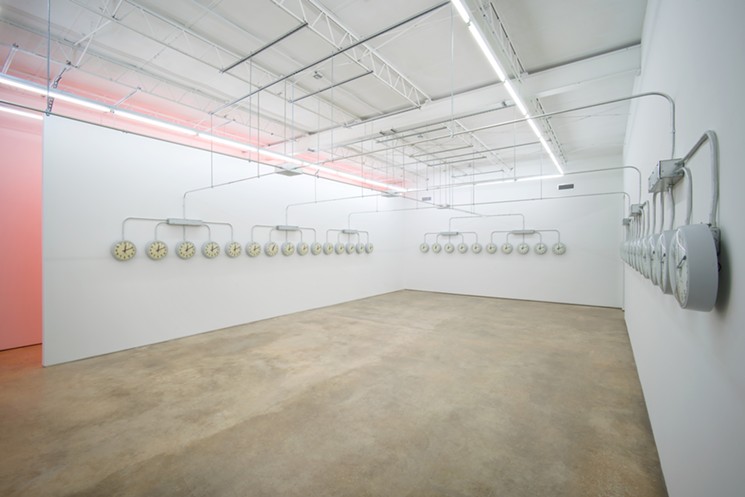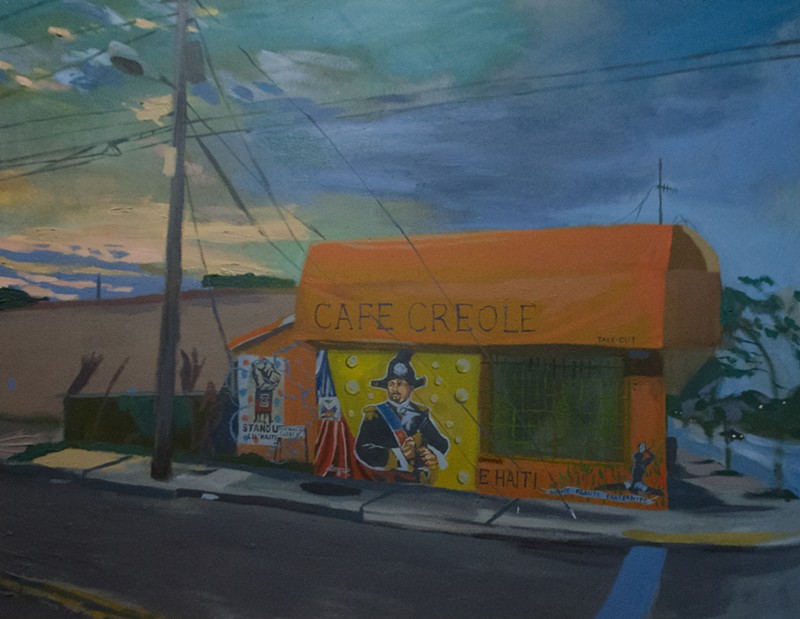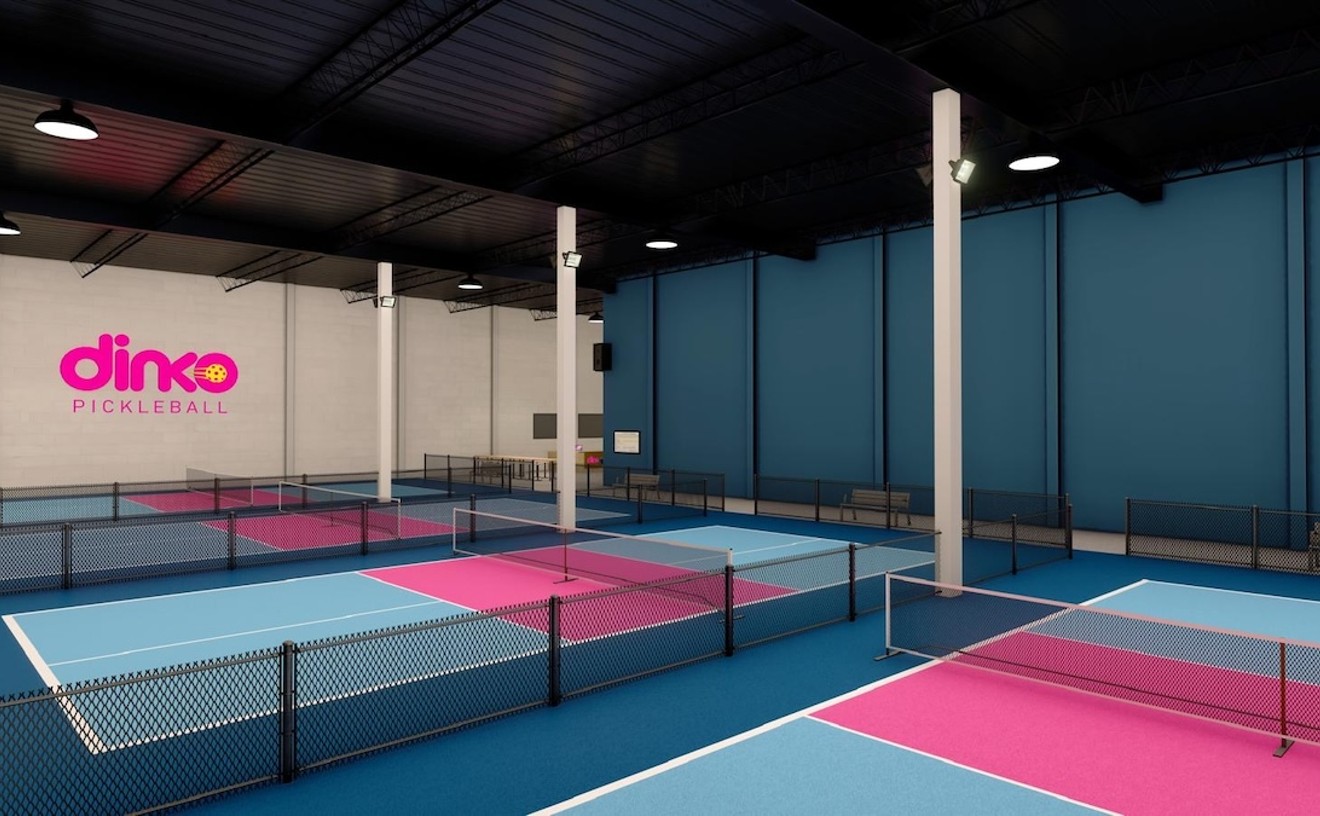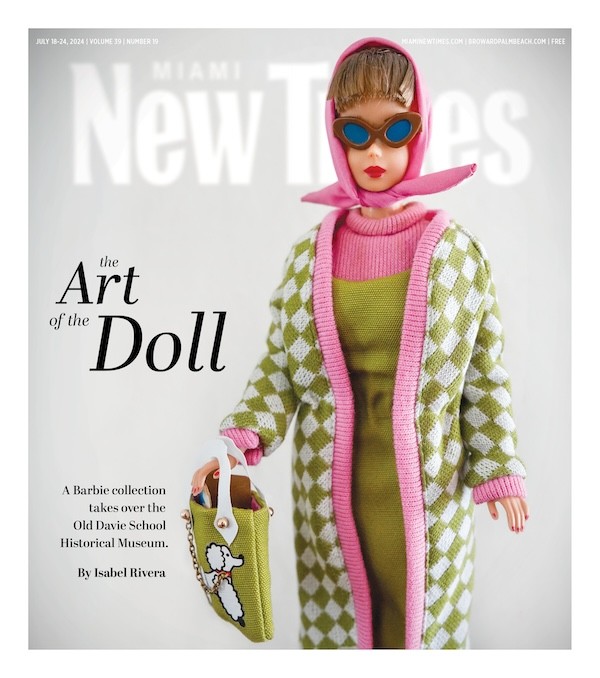"I curated a group show in 2017 which included 20 Miami-based artists entitled 'Mere Façade,'" says Anthony Spinello, director and curator of Spinello Projects gallery and the online platform House of Spinello. "I organized this show partly in response to the New York Times interview with Gean Moreno by Brett Sokol."
"The whole argument at the time was that it was more about nobody doing environmental work... which wasn’t accurate," says Eddie Arroyo, one of the artists included in Spinello's "Mere Façade." Also included in that show — they actually had work in the same room — was Agustina Woodgate. And whether by magic or some unknown design, both Arroyo and Woodgate ended up on the roster of artists showing at the Whitney Biennial this year. The first Biennial to include two Miami artists in more than a decade, it opens to the public today.
"It really wasn’t about the artists," Arroyo stresses of the Sokol article. "It was basically a playful jab at the Whitney, of course, at the expense of Miami artists. I think it was something that was calculated. I was surprised not enough people caught it... but I thought it was a strategic move. The objective was to include an artist into the next biennial, and to see Miami as not just a placeholder for Art Basel."
Arroyo is a painter whose work documents buildings in Miami at risk of being replaced by developers in gentrifying neighborhoods like Little Haiti. Woodgate works in multiple disciplines, with projects ranging from bike-powered radio broadcasts to sidewalk poetry. In 2012, she represented Spinello Projects at the gallery's Art Basel Miami Beach debut. Both artists are represented by Spinello Projects.

Agustina Woodgate, National Times installation at Spinello Projects.
Courtesy of Spinello Projects; photo by Jesus Petroccini
This year, however, a series of protests have erupted over Warren Kanders, a vice chair on the Whitney's board of trustees whose business and investments are primarily in tear gas and other weapons of war. This has led to an open letter calling for Kanders' resignation (signed by Arroyo, Woodgate, and Spinello, as well as two-thirds of the Biennial lineup and over 100 other artists, curators, scholars, and Whitney staff) as well as nine weeks of protests from organizations like Decolonize This Space and the Indigenous Womxn's Collective.
"It comes as a great shock to not just the general public but even those in the art world to discuss corruption in the art world," says Arroyo, whose painted landscapes have focused on the gentrification of Miami neighborhoods for the last eight years. Along with the awareness he hopes to bring through his paintings, Arroyo collaborates with activists combating Miami developers' encroachment into heritage neighborhoods. "I mean, it’s weird; I’ve spoken to a number of artists who are like, ‘It never used to be this bad.’ But art historically has always been for people with wealth and power. These things are not new, but given our current moment, what has always been political is rendered in starker relief. There is less of a compulsion to pretend that everything is OK."
A review of this year's Biennial in Hyperallergic opens with a description of Woodgate's piece in the show, National Times. Like many of Woodgate's other works, which focus on erosion, palimpsests, and transformation, his clocks "progressively erode their functional value, collectively reclaiming autonomy in the process of disintegration." Hyperallergic's Zachary Small paints the Biennial as being too emotionally removed from the fraught, charged content it addresses. The reviewer wonders if, like Woodgate's clocks, the Whitney and its Biennial have lost some of their functionality. "How has the museum’s essential purpose shifted as the public grows cognizant of the inequitable relationships between money, power, and culture? And how has this great laboratory of democratic expression slowly eroded its own functional value, even as it purports to defend individuality and intellectualism?"
Reckoning with art institutions, including the Whitney, and those relationships between money, power, and culture is warranted. And activists and artists alike have made clear their fight doesn't stop with getting artists paid or forcing Kanders to resign. At the beginning of its program of protests, Decolonize This Space tweeted a photo implicating 16 other Whitney trustees with troubling ties similar to Kanders'. And with the kind of irony that's only really possible in the world of high art, the Biennial includes Triple Chaser, a film by London-based research group Forensic Architecture and Laura Poitras that details the exact nature of Kanders' business dealings with Triple-Chaser Grenades. We can only assume the curators saw it as an enlightened move.
Still, performative political tensions aside, the inclusion of Arroyo and Woodgate in the 2019 Biennial places Miami on a national stage. As Spinello explains, "The Whitney Biennial is the longest-running exhibition in the country to chart the latest developments in American art and is known for taking the pulse of contemporary art. If an artist is invited to participate in the Biennial, their work is given an extraordinarily visible platform and is in conversation with some of the most relevant artists of that time."
"I’m emotionally optimistic but intellectually pessimistic," says Arroyo of the honor of being included and the opportunity to make more people aware of the effects of gentrification. "I’m still shocked that I’m allowed to talk about these things on this particular platform because I’ve been talking about it for such a long time.
"Artists don’t like to talk about gentrification. They’re at the tip of the spear," he adds. "The artists are the missionaries and the galleries are the churches. One of its roles is to pacify the community within the system of gentrification. Artspeak is a whole new system of belief that makes sure people go along with it."













